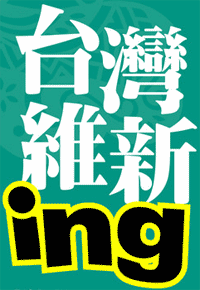I haven’t provided any news from North Korea in quite some time. Truly, I am wicked human scum whose frantic attempts to stifle the true voice of the people will be thwarted.
So here are some remarks from this year from North Korea’s official news agency (found on the Internet on a .jp domain — heh).
First off, in case anyone was wondering which of the world’s languages is wonderful beyond compare, it’s Korean:
There are more than 5,000 languages in the world, none of which can compare with the Korean written and spoken languages delicate in expression, rich in meaning and abundant in vocabulary.
Part of the reason for this is that Korean, at least as spoken in North Korea, has been rid of lots of foul loan words. Ah, purity!
More than tens of thousands of common vocabularies and terminology have been purified from Chinese and foreign words. A lot of inherent Korean words have been discovered and arranged and the Korean written and spoken language has developed into a new system with inherent Korean words as the main.
(Kidding aside, there really is a certain logic to this, given the problems that adopting Sinitic words and their Chinese characters into Korean caused for literacy.)
OK, back to linguistic reality, as defined by Pyongyang:
The Korean people are proud of having the Pyongyang cultured language and are embodying in their linguistic life thoroughly.
The Pyongyang cultured language is the standard one of the nation, which is fully reflecting the national characteristics and constantly developing in accordance with the requirements of the times.
The Koreans are a nation of one and the same blood who have lived in a territory with same culture down through history. They have developed the Korean language into the Pyongyang cultured language, centering around Pyongyang, the hub of the politics, economy and culture, since the liberation of the country from the Japanese colonial rule.
The Korean language, with abundant vocabularies, can correctly distinguish the differences between various objects and their meanings and clearly express people’s feelings and emotion, color, taste and etiquette.
Its pronunciations are fluent, intonations soft and sounds beautiful.
The Pyongyang cultured language comprehends the superior linguistic factors of the national language.
In particular, all the words of foreign origin which are difficult to understand have been removed and a vocabulary system has been established on the basis of home-grown words. As a result, the Pyongyang cultured language protects the purity of the Korean language on a high level.
Chinese and Japanese words had been brought into the Korean language in the past owing to the flunkeyism of feudal rulers and the Japanese imperialists’ moves to obliterate the Korean language. Foreign words including them have been arranged into Korean ones.
So now you know.
sources:
And for lagniappe: KCNA Random Insult Generator

